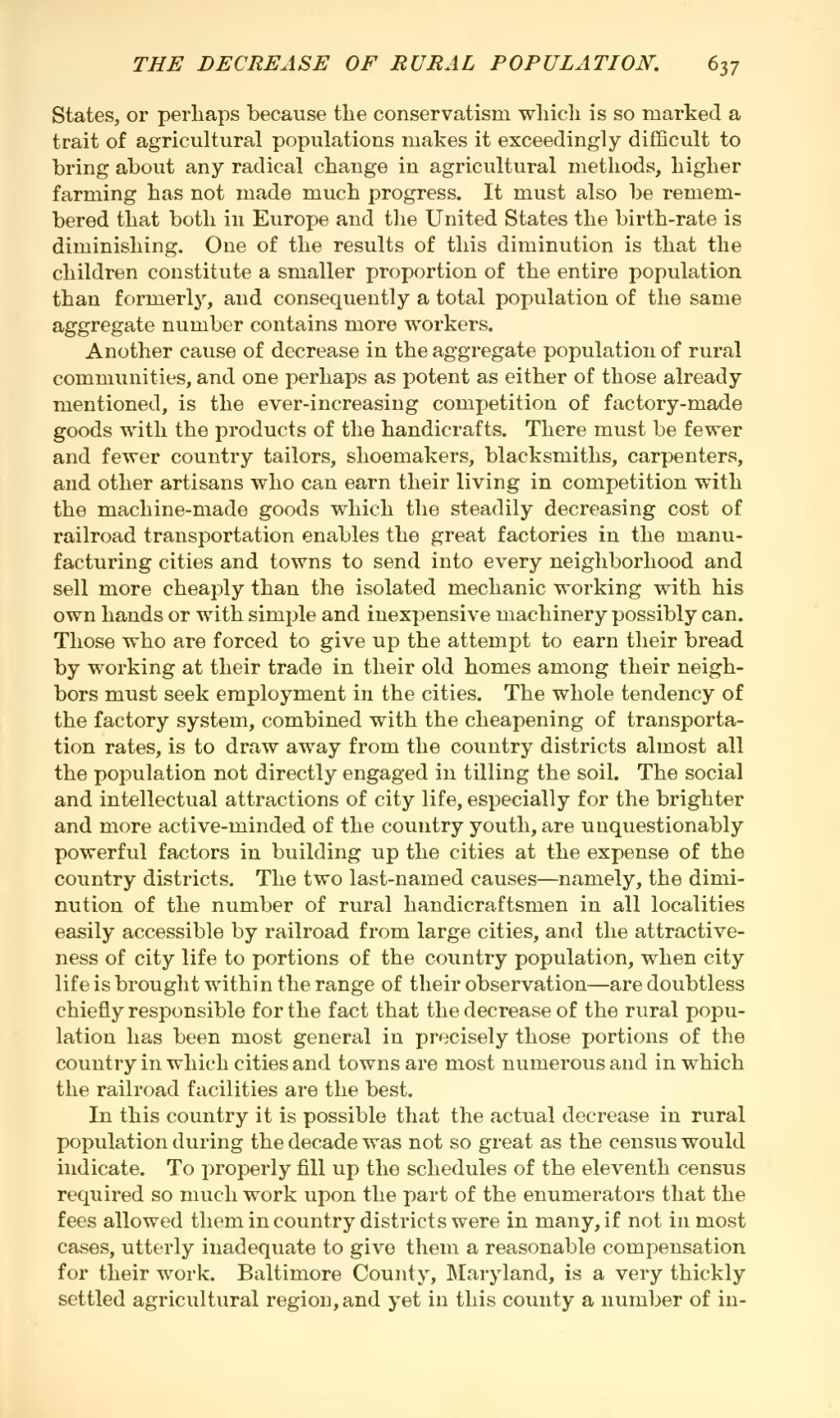States, or perhaps because the conservatism which is so marked a trait of agricultural populations makes it exceedingly difficult to bring about any radical change in agricultural methods, higher farming has not made much progress. It must also be remembered that both in Europe and the United States the birth-rate is diminishing. One of the results of this diminution is that the children constitute a smaller proportion of the entire population than formerly, and consequently a total population of the same aggregate number contains more workers.
Another cause of decrease in the aggregate population of rural communities, and one perhaps as potent as either of those already mentioned, is the ever-increasing competition of factory-made goods with the products of the handicrafts. There must be fewer and fewer country tailors, shoemakers, blacksmiths, carpenters, and other artisans who can earn their living in competition with the machine-made goods which the steadily decreasing cost of railroad transportation enables the great factories in the manufacturing cities and towns to send into every neighborhood and sell more cheaply than the isolated mechanic working with his own hands or with simple and inexpensive machinery possibly can. Those who are forced to give up the attempt to earn their bread by working at their trade in their old homes among their neighbors must seek employment in the cities. The whole tendency of the factory system, combined with the cheapening of transportation rates, is to draw away from the country districts almost all the population not directly engaged in tilling the soil. The social and intellectual attractions of city life, especially for the brighter and more active-minded of the country youth, are unquestionably powerful factors in building up the cities at the expense of the country districts. The two last-named causes—namely, the diminution of the number of rural handicraftsmen in all localities easily accessible by railroad from large cities, and the attractiveness of city life to portions of the country population, when city life is brought within the range of their observation—are doubtless chiefly responsible for the fact that the decrease of the rural population has been most general in precisely those portions of the country in which cities and towns are most numerous and in which the railroad facilities are the best.
In this country it is possible that the actual decrease in rural population during the decade was not so great as the census would indicate. To properly fill up the schedules of the eleventh census required so much work upon the part of the enumerators that the fees allowed them in country districts were in many, if not in most cases, utterly inadequate to give them a reasonable compensation for their work. Baltimore County, Maryland, is a very thickly settled agricultural region, and yet in this county a number of in-

